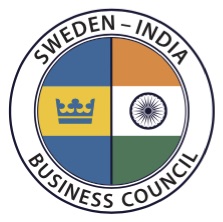India’s growth rate – is it rapid enough? Feb 2019
Just three weeks before 29 February, when the Modi government will present its second full year budget, the Central Statistics Office has released its projections of GDP growth for the current fiscal year. Its verdict? The Indian economy will attain a growth rate of 7.6 percent. Given the relatively disappointing third quarter results of 7.3 percent, it presupposes that GDP in the last quarter (the present quarter) will grow by 7.8 percent.
India will be the fastest growing big economy in the world if these predictions hold water. It will outperform China, whose growth for 2015 will stop at only (for them) 6.9 percent, the lowest since 1990.
Non-agricultural growth rates in India did reach the impressive figure of 9.2 percent in the third quarter of this fiscal year. These growth figures will make it easier for Finance Minister Arun Jaitley to resist pressure to abandon the fiscal deficit target of 3.5 percent, down from 3.9 percent, in the present fiscal year—a move that the head of the Central Bank (RBI), Raghuram Rajan, has been strongly urging Jaitley to resist.
Still, both Jaitley and Prime Minister Modi have stressed the need for the budget for FY 2016-2017 to stimulate growth and employment. The only path left for them, excluding more fiscal stimuli, is to forcefully continue with structural reforms.
That is easier said, but how will it be done? The most acute candidate for structural reform—to create a nationwide indirect tax, GST—seems to be totally stuck in Parliament. Labour market reform, also a very urgent candidate for action, has been outsourced to the state governments to take care of, since there was no success in sight for this reform in Parliament.
What would the prospects then be for other necessary reforms if the present stance of the Congress party prevails in not letting any Modi government reform proposals through the upper house, where Congress still has a large say? This seems especially tricky since the BJP appears to lack the skills to manage Parliament proceedings.
On top of this, indicators such as credit growth, especially to the corporate sector, electricity consumption, transport sector growth, foreign trade and corporate profits are not showing very positive figures. GDP projections alone are, therefore, not very robust indicators of where an economy is headed.
The respected media commentator TN Ninan concluded recently that India is treading water, not swimming forward in the direction and speed needed.
Given this fragile situation, it will be exciting to see what Modi/Jaitley will come up with in the budget presentation on 29 February. Will new bold structural reforms be presented? Will the Modi government make the efforts necessary to get proposals accepted by the opposition in the upper house?
With 12 to 14 million new entrants in the labour market each year, stronger economic growth and job creation must be at the absolute forefront of their endeavours. Since all reforms take time to have an effect in real life, the time for Modi to take bold steps has started ticking. It is not to be taken for granted that he can wait to take these steps, if he wants to win in 2019.
